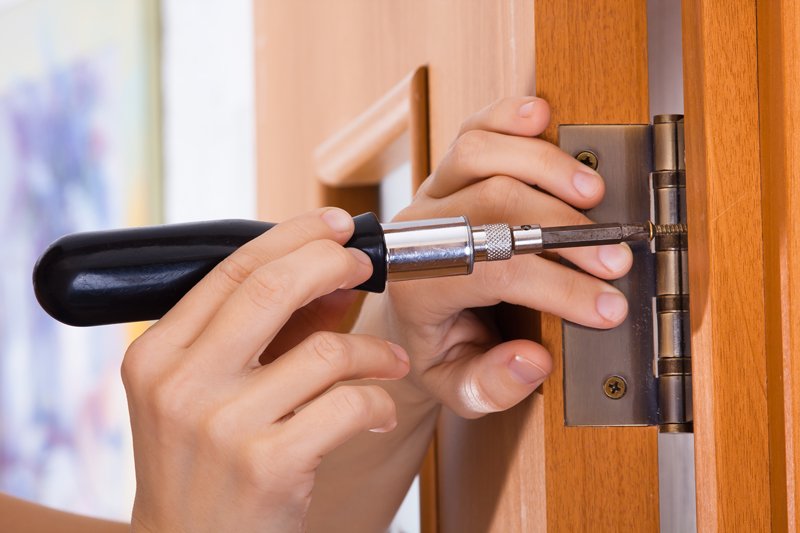
Understanding how your bifold door works can make the troubleshooting process smoother. Bifold doors usually operate on a track system where the door panels move side by side, creating an open space without taking up much room. This allows for a seamless flow between areas, but this very system can become misaligned. Let’s dive in and explore how to pinpoint the problem and get your door back in working order.
Check the Track Condition
The first step in solving a bifold door problem is to evaluate the condition of the track itself. A damaged or dirty track can easily cause the doors to come off alignment. Grab a flashlight and closely inspect the track for any debris, dirt, or obstructions.
- Debris: Small items like dust, dirt, or even pet hair can block the door’s movement. A quick clean with a damp cloth can work wonders.
- Damage: Look for any dents or bends in the track. If you notice a significant deformity, this could be the reason your door is off track.
- Alignment: Ensure that the track is level. If it’s tilted, you might need to adjust the mounting brackets.
Taking these steps can help you quickly identify if the track itself is the culprit.
Inspect the Hinges and Pins
Next, you’ll want to take a good look at the hinges and pins of your bifold door. Often, the issue is related to these hardware pieces being loose or damaged.
Start by checking each hinge for tightness. Just like your bike’s chain needs to be snug for a smooth ride, your door hinges need to be secure. If you notice any loose screws, grab a screwdriver and tighten them up.
- Pins: Each door panel has pins that fit into the top and bottom tracks. If these pins are worn or missing, the door will misalign. Consider replacing any damaged pins.
- Hinge Wear: Over time, hinges can wear out. If you see rust or significant wear, it might be time to replace them.
Keeping everything tight and in place is crucial for a correctly functioning bifold door.
Evaluate the Door Panels
Now, let’s turn our attention to the door panels themselves. Sometimes, the problem lies in the doors rather than the track or hinges. You might be wondering how to spot issues with the panels.
Start by checking if the panels are evenly spaced when closed. If one panel is sticking out more than the others, it could be causing the whole system to shift. Gently push and pull on each panel; they should move smoothly without too much resistance.
- Wear and Tear: Look for any signs of warping or swelling in the wood or material, especially in areas where moisture might have gotten in.
- Alignment: If the door panels seem uneven, you might need to adjust the way they hang. Sometimes, a small adjustment can realign everything.
By keeping an eye on the panels’ condition, you can quickly resolve any misalignment.
Adjust the Bottom Guide
The bottom guide of your bifold door is often overlooked but plays a crucial role in keeping the panels in line. Much like a train on its tracks, a well-set guide keeps everything moving correctly.
Check to see if the guide is secure and properly installed. Sometimes, it can become loose, causing the panels to shift. If your guide seems off, you may need to adjust it or even replace it entirely.
- Position: Ensure the guide is centered in the track. If it’s misaligned, reposition it as needed.
- Height: The height of the guide should allow the panels to move freely without obstruction.
Taking a moment to adjust the bottom guide can greatly improve the functionality of your bifold door.
Consider Environmental Factors
Environmental factors can also play a significant role in how well your bifold door functions. Changes in temperature and humidity can impact materials, causing them to expand or contract.
If you live in an area with high humidity, wooden doors might swell, making movement difficult. Similarly, in colder climates, doors can warp due to temperature shifts.
Consider these tips:
- Humidity Control: If possible, use a dehumidifier in high-humidity areas to reduce excess moisture.
- Material Choice: If your door is consistently problematic, you might want to think about switching to a different material, like vinyl or aluminum, which can handle weather changes better.
Understanding the effect of your environment is essential for long-term door performance.
What to Do If All Else Fails
If you’ve checked everything and your bifold door is still off track, it might be time to call in a professional. Sometimes, a second opinion can spot issues that are easy to overlook.
Here’s what to consider:
- Professional Help: Hiring a carpenter or handyman can save you time and trouble. They can give your door a thorough inspection and provide expert repairs.
- Cost vs. DIY: If the repairs look costly, weigh the benefits of doing it yourself. Sometimes, watching a how-to video can empower you to tackle the problem.
Knowing when to ask for help can make the difference between a quick fix and a longer-term problem.
Don’t let a bifold door off track stress you out. By systematically checking the track, hinges, panels, bottom guide, and environmental factors, you can often find the root of the issue. If all else fails, don’t hesitate to reach out to a professional.
Remember, a little maintenance goes a long way in keeping your bifold door functioning smoothly. Once you’ve pinpointed and resolved the problem, you can enjoy the seamless movement and aesthetic appeal of your bifold door once again, just like a bike ride on a sunny day!
